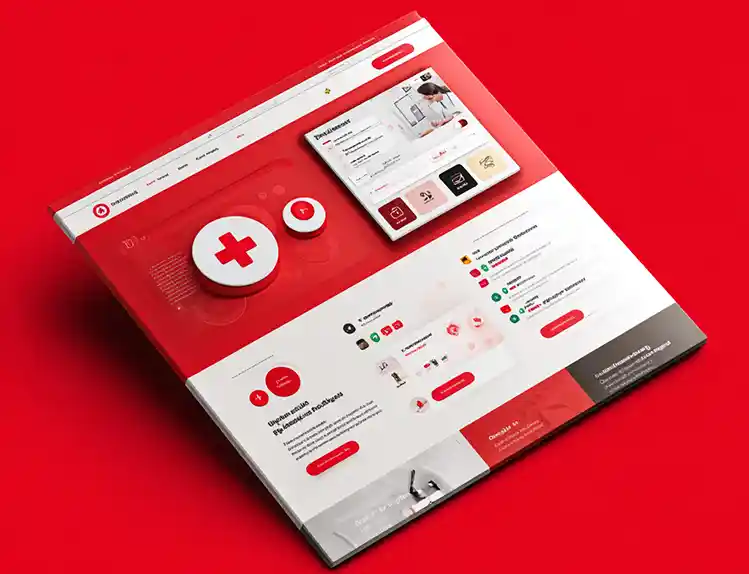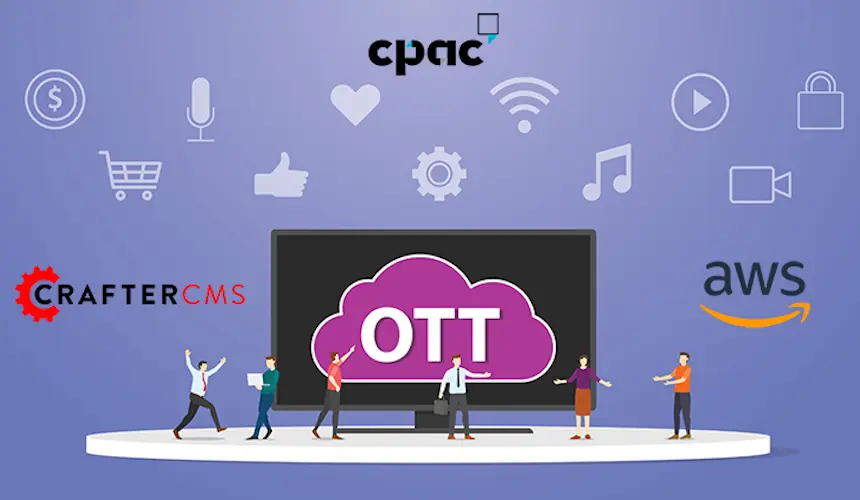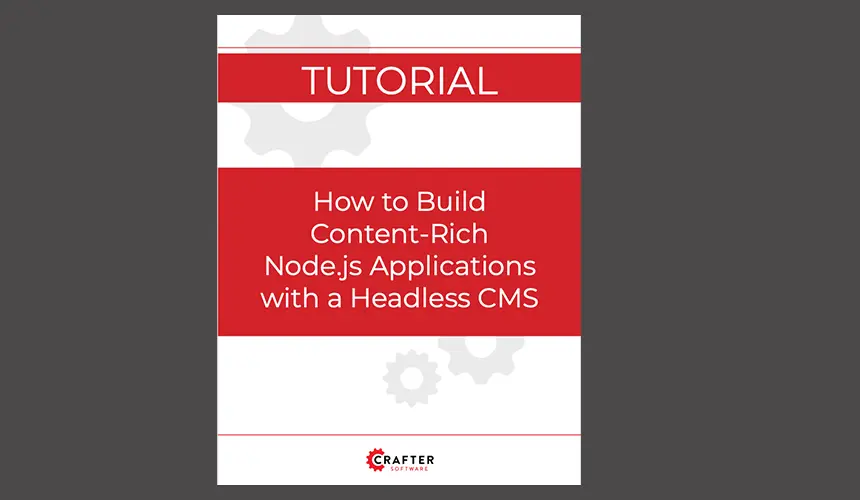Choosing An Open Source Software Stack For Your CMS

Mike Vertal

Open source software isn’t just for indie developers experimenting with new tools and trying to build their next projects. Large enterprises and government agencies have been using open source software tools to drive innovation and make their mark in the digital landscape. As Gartner points out, “much of the world’s software infrastructure is now based on open-source software.”
In the world of content management, open source software can provide several benefits, especially when it comes to navigating the multichannel digital landscape. But choosing the right software for an open source software stack isn’t always as simple as it may seem. In this article, we’ll dive into what makes up an open source software (OSS) stack, why it’s ideal compared to a proprietary system, and Crafter’s recommendation for an OSS stack for your CMS.
What Is An Open Source Software Stack?
An open source software stack is a group of independent open source tools that work together to implement a solution. These tools are all stacked together to perform different services and communicate directly with applications. Open source software has easily accessible source code that anyone can modify or enhance.
The complexity of an OSS stack can vary, but it may include open source frameworks, tools, SDKs, platforms and libraries that work together to support and deliver an application. For example, developers can combine open source front-end frameworks like React or Angular with an open source content management system to launch engaging digital experiences.
Why Choose Open Source Software? (Things to Consider)
Open source software has some compelling benefits that make it appealing and an excellent choice for building a software stack. Here are some of the benefits:
Wider Adoption
Open source software is easily accessible which also means it is generally widely adopted. According to BCG, 80% of IT departments plan to increase their use of open source software over the next year, with 95% of IT specialists believing that leveraging open source software is absolutely critical. With many of your competitors gaining the advantage of open source software, not using it could mean being left behind.
Higher Quality
The popularity of open source software means that the communities are vast and can better ensure quality of the product. This means that there are fewer bugs and other technical issues, and there is plenty of support from large technology companies as well. Vulnerabilities can also be patched much quicker than with other types of software.
Extensibility
Arguably the primary benefit of open source software is its extensibility and customizability. With code being clearly visible and easily modified, companies can adjust it to suit their needs, making it easier to integrate into an existing software stack. Ultimately, this provides more freedom and flexibility to organizations, removing limits that sometimes occur with proprietary software products.
Better Support
When working with proprietary software, if anything goes wrong, your IT team needs to rely on support from the owner of that software to help fix it. With open source software, IT teams can draw on support from an expansive community of other developers using the software products, making it easier to solve problems when they run into challenges.
Cost Effectiveness
Open source software is generally free, and when you need enterprise support it usually comes at a more favorable price point than proprietary systems. Fully supported open source solutions and/or fully-managed hosted solutions, for instance, will require you to pay a fee, but usually much lower when compared to proprietary software vendors who have to support their large sales and marketing teams. In addition, open source also enables you to avoid being locked into a specific vendor as you always have the option of going to free and community-supported open source.
Read More: Benefits of Open Source in Times of Uncertainty
Crafting An OSS Stack
Building an open source software stack to handle your content management needs means that you need to consider elements for both the frontend and backend. Here are some of Crafter's choices for an OSS stack.
Front-end Tools
React
React is an open source JavaScript library created by Facebook that is ideal for building the user interfaces for SPAs, the view layer for mobile and web applications, and more. Developers can build large applications without altering data or page reloading. The simplicity and low learning curve for React mean that developers can get up to speed quickly and start creating interactive UIs.
Angular
Angular is another SPA framework developed by Google and built on TypeScript. It provides developers with a component-based framework for building scalable web applications, and includes well-integrated libraries that cover a wide variety of features, including routing, forms management, client-server communication, and more. It also provides a comprehensive suite of developer tools to help you develop, build, test, and manage code. All of this enables you to build lightweight applications, create easily maintained SPAs, and more.
Vue
A progressive web app framework for building user interfaces, Vue.js is incrementally adaptable with a core library focused on the view layer. This enables Vue to be easily integrated with other libraries, used to create SPAs, and develop desktop and mobile applications.
Freemarker
Freemarker is a Java-based template engine that supports HTML5-based websites and applications. Freemarker can be used to generate HTML for web pages or emails, and is ideal for quickly creating websites, landing pages, microsites, and such. Freemarker integrates well with a Java-based CMS and uses the MVC pattern, and template engines such as this can be used to separate code from content and increase code reusability.
Bootstrap
Bootstrap is one of the most popular front-end frameworks and open source projects in the world, having come out of the development team at Twitter over 10 years ago. Bootstrap is now arguably the most popular framework for building responsive, mobile-first sites. Its toolkit features Sass variables and mixins, a responsive grid system, extensive pre-built components, and powerful JavaScript plugins. When combined with a templating engine such as Freemarker, front-end developers can rapidly build powerful websites and web apps for a wide variety of use cases.
Back-end Tools
Spring
Spring is an application development framework for enterprise Java applications. The Spring framework enables you to build applications on the Java Enterprise Edition as well by providing the architecture that enables IT teams to implement business logic without being tied down to a specific deployment environment.
Elasticsearch
Elasticsearch is a search and analytics engine built on Apache Lucene and written in Java that provides search functionality for content applications. Everything from blogs to websites, e-commerce stores, and more. It combines with other components in the ELK stack, specifically Logstash and Kibana, to provide storage, visualization, and analysis of data.
Groovy
Apache Groovy is an object-oriented dynamic programming language for Java virtual machine (JVM). Groovy enhances Java applications by providing greater flexibility and including special features for applications. Groovy provides support for static and dynamic typing and server-side scripting and can be used to deliver lightweight, fast, easy-to-use, and sophisticated custom content solutions.
Node.js
Node.js is an open source, backend JavaScript runtime environment for executing code outside of the browser. Node.js is used for traditional websites, building fast and scalable network applications and back-end API services. With Node.js, developers can write command-line tools and run server-side scripting to build dynamic web content before the page goes to the web browser.
Git
Git is a sophisticated, distributed version control system that is essential for tracking changes to source code. Git enables developers to track changes made to files so that they have a record and can roll back to a previous version if required. Git allows developers to merge changes so that everyone on a development team can work separately without disrupting the main version. Using Git for both code and content management opens up a whole range of collaborative use cases and resolves many of the bottlenecks of traditional CMSs built on SQL or NoSQL databases.
GraphQL
GraphQL is a query language for APIs, along with a runtime for running queries across a range of data and content sources. GraphQL provides a complete description of the content and/or data in any API, and gives clients the power to ask for exactly what they need and nothing more. This makes it easier to evolve APIs over time, and enables powerful developer tools.
Docker
Docker provides a comprehensive end to end platform that is engineered to work together across the entire application delivery lifecycle. It provides UIs, CLIs, APIs and security that is engineered for modern, enterprise applications. Docker takes away repetitive, mundane configuration tasks and is used throughout the development lifecycle for fast, easy and portable application development - desktop and cloud.
Build Your OSS Stack By Using CrafterCMS
Given how quickly the world of software development is changing, enterprises can’t afford to be bogged down by proprietary software stacks that offer limited flexibility and are difficult to manage when trouble arises. Building an OSS stack can provide businesses with greater quality assurance, help them to avoid vendor lock-in, and ensure easy customization to fit their unique needs.
CrafterCMS is an open source, Java-based headless CMS that enables developers to quickly build sites and apps, and content authors to easily create, edit, manage and deliver content to a variety of front-end interfaces. CrafterCMS is built on a philosophy of openness that isn’t limited to just the source code. With the ability to manage your content with a platform like Crafter, your business can get the most out of your digital experiences and innovate as you see fit.
CrafterCMS provides the ideal foundation for your OSS stack. Built on Java and Spring, Crafter also offers built-in Groovy support. As a Git-based CMS, Crafter enables organizations to meet the technical demands of building modern digital experiences today. Front-end developers also have access to any framework (e.g., React, Angular, Vue, Freemarker/Bootstrap) they think will fit a digital channel best, releasing the restrictions that legacy platforms may shackle them with. As a headless, API-first platform CrafterCMS offers REST and GraphQL APIs, and server-side development support with Groovy and/or Node.js.
While having a strong open source software stack is essential, that doesn’t mean that marketers should be left out to dry. Content authors can also count on best-in-class content authoring experience, including drag-and-drop page building (for both HTML-based sites and SPA/PWA-based sites and apps), WYSIWYG editing, in-context preview and approvals, multi-lingual support, and more -- making it easy to create the experiences that they need and deliver them with confidence to any digital channel channel. Plus, CrafterCMS facilitates easy integrations with any software tool your business needs through the use of APIs, enabling you to expand your OSS stack as required.
For enterprises that want to self-host and self-manage, the open source CrafterCMS project is available in Docker images. For enterprises that want a fully-managed SaaS/PaaS solution, Crafter Cloud leverages Docker and Kubernetes to deliver a highly efficient, elastically scalable cloud CMS solution.
Discover how CrafterCMS and its open source stack can help you provide the optimal digital experiences for your customers by reading our White Paper: Building and Optimizing Multi-Channel Digital Experiences.
Related Posts

Is Your CMS MACH-Ready? A Practical Guide for Enterprise Architects

Sara Williams

What Kind of CMS Is CrafterCMS? Headless—Plus Everything You Need to Ship Faster

Amanda Jones

Migrating Your Legacy Database-Backed CMS to a Modern Git-Based CMS

Russ Danner

How a GitHub Outage Affects (or Doesn’t Affect) CrafterCMS

Amanda Jones
Related Resources
-

Introducing CrafterCMS v4.0
Webcast
-

Modernizing Video Delivery and Content Management at CPAC, A Canadian Nationwide Broadcaster
Webcast
-

Building React Apps on a Headless CMS
White Paper
-

Server Side Rendering: The Missing Component of Headless CMS
Webcast
-

How to Build Content-Rich Node.js Applications with a Headless CMS
Tutorial





